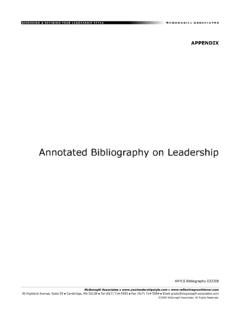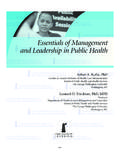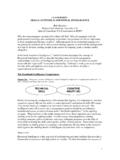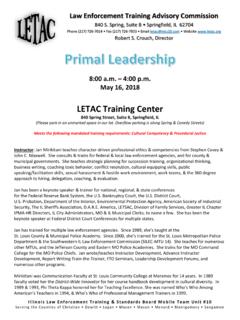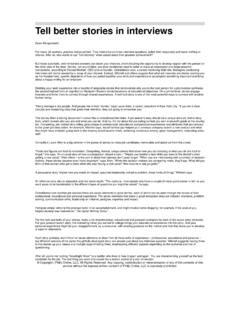Transcription of Fitzgerald, G. I Just Can't Help Myself - …
1 I Just Can t Help Myself : understanding the Links between urges and Play, Gillian Fitzgerald, Educational leadership Project (Ltd), I Just Can t Help Myself : understanding the Links between urges and Play Author: Gillian Fitzgerald A child isn t getting ready to live, a child is living. Anja GeelanWhen you arrange your shoes, do you line them up symmetrically? When you are passing a lamp post, do you ever swing around it, or want to swing around it? Or perhaps you are a person who has to hang the washing out in your own particular way?
2 These are all subconscious urges , things that our practical logical brain tells us is entirely inappropriate for someone our age but yet we still go ahead and do it anyway because, well, we just have to! In Pennie Brownlee s article The Sacred Urge to Play she reminds us that we are biologically driven to play! At the very basic animal-human level we have physical play urges encoded into us, it s just part of being human. In the past we have identified these play urges in our tamariki as schemas.
3 This term was introduced by Jean Piaget in asks us to think about how much more difficult it must it be for tamariki to resist urges coming through them, even when they are aware that actioning the urge is not such a great idea? They bust up a block construction built by others or throw the block and it hits another child on the head. They have that feeling that something made me do it. Rose Pere reminds us in Te Wheke: A Celebration of Infinite Wisdom that hinengaro (the mind) is very powerful and definitely influences the way a person acts and feels.
4 I was fortunate to attend Kimberley Crisp s workshop This is URGEn t, which explored urges and how practitioners can be in tune with them and provide what s needed for self chosen, uninterrupted imaginative play. Kimberley reminded us that tamariki have a primal need, an unfolding urge to make sense of their world, develop their working theories with the tools they have at hand and that we need to take a closer look at what we are providing, in our curriculum, our resources and environments to allow them that freedom to truly BE!
5 Kimberley has set up a private kindergarten called The Nest in Clive and this is the first centre in New Zealand specifically set up with the Pikler Approach underpinning all of its philosophy and practice. She believes that by slightly changing the lens by which educators view tamariki, that it can totally transform our experience and the child s experiences. She believes that the way we see children is in direct relation to our beliefs. Whether it s the urge to rearrange the furniture for the second or third time this week or perhaps to line up or set out resources in your particular way, although your colleagues have already set them out, or to re-peg the washing when someone else has pegged it up, even though it will still dry the way they did it.
6 Pennie Brownlee says, you will know that it is not always easy to do the logical, when you know you ll get a buzz in the pleasure centre of your brain doing the illogical. How we see, is how we will be If we believe the child is an empty vessel, then we see our role as that of filling the child up. If we believe on the other hand that the child is a person and an equal partner then this would drive us differently and impacts on the environment, both physical and emotional that we create. If we see a child as being obsessed with the same actions, it can create a harmful environment for the child's development and learning but urges or schema theory prompts a new view, that of the child as an investigator, a constructor of meaning, persisting with meaningful actions.
7 This might well prompt lessening of tension and conflict, an atmosphere in which the child can explore with more freedom and confidence, and with the affirmation and active interest of significant adults. So perhaps it is our belief systems that we need to you a teacher that is always actively involved with tamariki, constantly talking and questioning, orchestrating and directing? Is this driven to some extent, by your concern about how your colleagues, manager or parents might view you? If you stand back, quietly observing the play that is happening around you, are you afraid that they will think that you are not doing your job, not engaging with tamariki, not interested in teaching?
8 This teaching practice can hinder the opportunities our tamariki have to become deeply engrossed in their play, in what Mihaly Csikszentmihalyi describes as a state of flow ; a state where they are completely focused, motivated and fully immersed; the play that is driven from their natural inner urges . If we maintain this view are we not encouraging a generation that is waiting to be stimulated, entertained, directed and organised and how does this sit alongside the notion of 21st Century learners?
9 Cathy Nutbrown, in her book Threads of Thinking says Adults who teach young children must remain constantly aware that young children are capable of being patient observers, especially when given the space and time to do so. Young children cannot be taught effectively if I Just Can t Help Myself : understanding the Links between urges and Play, Gillian Fitzgerald, Educational leadership Project (Ltd), learning is always artificially divided into causally defined Kimberley shared, that when their team became consciously still and observant, they noticed that it was the child s urge that drove their play rather than a particular resource, or their input into the child s play.
10 It s imperative that we lay great emphasis on the importance on the teacher observing the child closely to recognise these urges so that they can be planned for. By supporting children in their interests and passions, and letting them lead in their play, we empower them to learn and grow and is this not the principle Empowerment or Whakamana? When we encourage deep involvement in activities children are passionate about, they experience psychological and emotional wellbeing - is this not Wellbeing, or Mana Atua?
